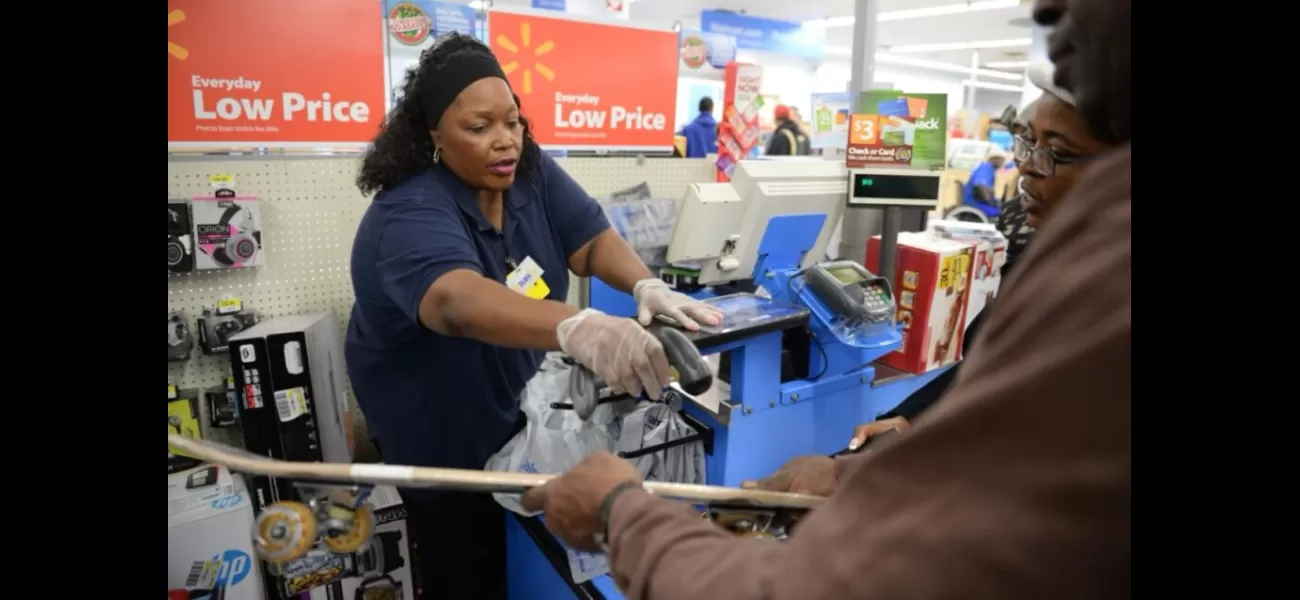Walmart is replacing self-checkout lanes with staffed ones at more locations.
A representative claims the change will improve the shopping experience for customers.
April 23rd 2024.

At select Walmart locations, customers will now be greeted by staffed checkout lanes instead of self-checkout options. This change is being implemented at two stores, one in Missouri and one in Ohio, in an effort to enhance the in-store experience for shoppers. A spokesperson for the grocery giant, Brian Little, confirmed that the construction for this change will take place after hours and will be completed in about two weeks.
According to Little, the decision to eliminate self-checkout lanes was based on feedback from customers, employees, and the shopping habits of the local community. He believes that this change will not only improve the overall shopping experience but also give Walmart associates the opportunity to provide more personalized and efficient service.
The trend of eliminating self-checkout lanes has been seen in several major retailers, with Target being one of the first to make the move. In February 2024, they reduced the hours of customer usage in select stores to combat the issue of theft, also known as "shrink," in the retail industry. Dollar General followed suit by removing self-checkout stands in 300 stores with the highest rate of shoplifting and merchandise losses. In their remaining 9,000 stores, they converted most or all of the self-checkout registers to regular checkout with cashiers. CEO Todd Vasos believes that these actions will have a positive impact on shrinkage.
This is not the first time Walmart has made changes to their self-checkout options. In 2023, three locations in New Mexico also removed self-checkout aisles. Studies have shown that self-checkout lanes can lead to "partial shrink," where items are not properly scanned and paid for by customers.
Before making the decision to eliminate self-checkout lanes, Walmart had already limited access to these lanes to only those using the company's Walmart+ or Spark delivery apps. Similarly, Target also implemented a policy of limiting customers to ten or fewer items in self-service lanes, resulting in a faster checkout process.
These changes are not limited to American retailers, as British supermarket chain Booths also removed self-checkout stations in all but two of its 28 locations. This was after a study found that retailers in the US, UK, and other European countries with self-checkout lanes and apps had a loss rate of 4%, which is more than double the industry average.
In conclusion, Walmart and other major retailers are making changes to their self-checkout options in an effort to improve the shopping experience for customers and reduce issues such as theft and shrinkage. While some may miss the convenience of self-checkout, these changes ultimately aim to provide more personalized and efficient service for shoppers.
According to Little, the decision to eliminate self-checkout lanes was based on feedback from customers, employees, and the shopping habits of the local community. He believes that this change will not only improve the overall shopping experience but also give Walmart associates the opportunity to provide more personalized and efficient service.
The trend of eliminating self-checkout lanes has been seen in several major retailers, with Target being one of the first to make the move. In February 2024, they reduced the hours of customer usage in select stores to combat the issue of theft, also known as "shrink," in the retail industry. Dollar General followed suit by removing self-checkout stands in 300 stores with the highest rate of shoplifting and merchandise losses. In their remaining 9,000 stores, they converted most or all of the self-checkout registers to regular checkout with cashiers. CEO Todd Vasos believes that these actions will have a positive impact on shrinkage.
This is not the first time Walmart has made changes to their self-checkout options. In 2023, three locations in New Mexico also removed self-checkout aisles. Studies have shown that self-checkout lanes can lead to "partial shrink," where items are not properly scanned and paid for by customers.
Before making the decision to eliminate self-checkout lanes, Walmart had already limited access to these lanes to only those using the company's Walmart+ or Spark delivery apps. Similarly, Target also implemented a policy of limiting customers to ten or fewer items in self-service lanes, resulting in a faster checkout process.
These changes are not limited to American retailers, as British supermarket chain Booths also removed self-checkout stations in all but two of its 28 locations. This was after a study found that retailers in the US, UK, and other European countries with self-checkout lanes and apps had a loss rate of 4%, which is more than double the industry average.
In conclusion, Walmart and other major retailers are making changes to their self-checkout options in an effort to improve the shopping experience for customers and reduce issues such as theft and shrinkage. While some may miss the convenience of self-checkout, these changes ultimately aim to provide more personalized and efficient service for shoppers.
[This article has been trending online recently and has been generated with AI. Your feed is customized.]
[Generative AI is experimental.]
0
0
Submit Comment





